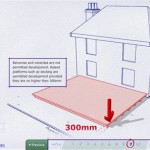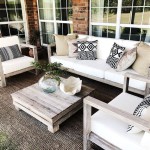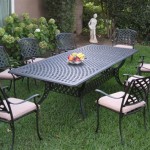A Comprehensive Guide To Patio Furniture Seating Plans
Creating a comfortable and functional outdoor living space requires careful consideration of the seating plan. A well-designed patio seating arrangement encourages conversation, facilitates traffic flow, and maximizes the enjoyment of the outdoor area. This guide provides a comprehensive overview of factors to consider when planning patio furniture seating.
Assessing Your Space and Needs
The first step in planning a patio seating area involves evaluating the available space and determining its intended use. Accurate measurements of the patio area are crucial for selecting appropriately sized furniture. Consider the following:
- Measure the length and width of the patio.
- Note the location of doors, windows, and other architectural features.
- Identify any existing landscaping or hardscaping elements.
- Determine the primary function of the patio (e.g., dining, lounging, entertaining).
- Estimate the typical number of people who will be using the space.
Choosing the Right Furniture
Patio furniture comes in a wide variety of materials, styles, and sizes. Selecting pieces that suit the space, climate, and intended use is essential. Key considerations include:
- Material durability and weather resistance (e.g., aluminum, wrought iron, wicker, teak).
- Comfort and ergonomics of seating.
- Style compatibility with the home's architecture and existing décor.
- Storage requirements and ease of maintenance.
- Budget considerations.
Creating Conversation Areas
Arranging furniture to promote conversation is a core element of a successful patio seating plan. The goal is to create a comfortable and intimate setting for social interaction. Consider these points:
- Position seating pieces in a circular or semi-circular arrangement.
- Maintain a comfortable distance between seats (approximately 4-8 feet).
- Use a coffee table or ottoman as a central focal point.
- Incorporate outdoor rugs to define the conversation area.
Defining Zones for Different Activities
Larger patios may benefit from being divided into separate zones for different activities. This creates a more organized and functional space. Implement these strategies:
- Designate a dining area with a table and chairs.
- Create a separate lounging area with comfortable sofas and armchairs.
- Use outdoor rugs, screens, or planters to visually separate zones.
- Consider incorporating a fire pit or outdoor kitchen into specific zones.
Maximizing Traffic Flow
Ensure smooth and easy movement throughout the patio by carefully planning traffic flow. Obstacles and bottlenecks should be minimized to create a comfortable and accessible space.
- Leave ample space between furniture pieces for comfortable movement.
- Position furniture to avoid obstructing pathways and doorways.
- Consider the natural flow of traffic through the space.
Incorporating Shade and Shelter
Providing shade and shelter is crucial for comfort and protection from the elements. This can enhance the usability of the patio throughout the day and in various weather conditions. Consider the following options:
- Install a pergola, gazebo, or awning for overhead shade.
- Use umbrellas for flexible and portable shade solutions.
- Incorporate trees or tall shrubs for natural shade.
- Consider outdoor curtains or screens for wind protection and privacy.
Adding Accessories and Lighting
Accessories and lighting are essential for enhancing the ambiance and functionality of the patio seating area. These elements can add personality and create a more inviting atmosphere.
- Use outdoor cushions and pillows for added comfort and color.
- Incorporate outdoor rugs to define spaces and add warmth.
- Install outdoor lighting for evening ambiance and safety.
- Add decorative elements such as planters, lanterns, and artwork.
Maintaining and Updating the Seating Plan
Regular maintenance and periodic updates are essential for keeping the patio seating area looking its best. This ensures long-lasting enjoyment of the outdoor space. Key considerations include:
- Clean and maintain furniture according to manufacturer's instructions.
- Replace worn or damaged cushions and accessories.
- Re-evaluate the seating plan periodically to ensure it still meets needs.
- Consider seasonal changes and adjust the furniture arrangement accordingly.

Big Saved Patio Furniture Set Build

Diy Outdoor Garden Dining Chair Digital Seat Plans Rustic Pallet Wood Home Furniture Document Self Build Seating Guide

Big Saved Patio Furniture Set Build

Outdoor Room Inspiration For Decks Patios Porches And More

74 Best Patio Decor Ideas For Any Outdoor Space

How To Build Patio Furniture Low Cost Simple

74 Best Patio Decor Ideas For Any Outdoor Space

36 Patio Cover Ideas That Make Outdoor Living A Breeze Architectural Digest

Building Furniture Dvd S

74 Best Patio Decor Ideas For Any Outdoor Space
See Also








